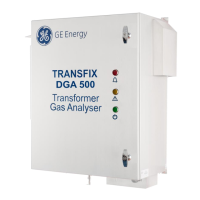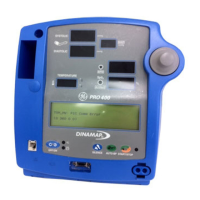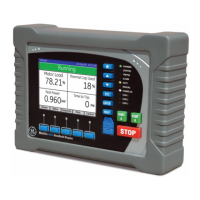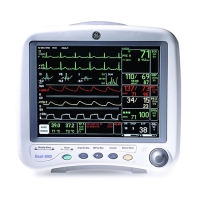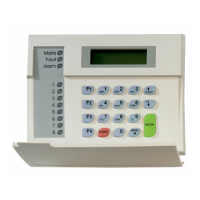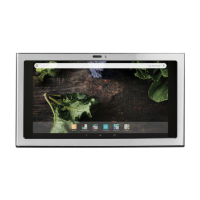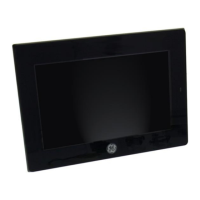Equipment overview: Theory of operation
2000966-542D Dash 3000/4000/5000 2-21
Non-Invasive blood pressure
The NBP function measures systolic pressure, diastolic pressure, mean
pressure, and heart rate. Patient alarms with adjustable high and low
limits for systolic, diastolic, and mean pressures are provided. System
alarms for deflation failure, inflation failure, maximum pressure
exceeded, measurement time exceeded, pulse too weak, hardware
malfunction, and system pressure leak are provided.
The NBP function operates in manual, auto, and stat measurement
modes. The patient monitor has backup protections for magnitude and
duration of applied cuff pressure (with different settings in adult and
neonatal modes).
The patient monitor accepts the rectangular NBP connector (compatible
with the Eagle 3000 monitor and some versions of the Tram module).
Invasive pressure
The invasive pressure function measures two blood pressures and
calculates systolic pressure, diastolic pressure, mean pressure, and
pulsatile pressure rate where applicable. Patient alarms with adjustable
high and low limits for systolic pressure, diastolic pressure, mean
pressure, and pulse rate are provided for each channel. System alarms
for sensor status (failure and disconnected), Smart BP event (artifact),
zeroing status (not zeroed, failure, and pressure sensed), and PA Wedge
status (wait, inflate, processing, complete, and no pulse) are provided.
The user can set an adjustable low-pass filter to 12 or 40 Hz. The 12 Hz
filter is implemented in software; the filter is disabled at the 40 Hz
setting.
The patient monitor accepts the red color-coded invasive pressure
connectors (compatible with the Eagle 3000 monitor, Eagle 4000
monitor, and Tram modules).
Temperature
The temperature function measures two temperatures. Patient alarms
with adjustable high and low limits for temperature are provided.
System alarms for sensor and calibration failures are provided.
The patient monitor accepts the brown color-coded connector (compatible
with the Eagle 3000 monitor, Eagle 4000 monitor, and Tram modules).
The patient monitor supports EN 12470-4 compliant probes. The probe
type is determined by identification signals in the probe adapter cable.
The temperature connector and measurement circuits are shared with
the cardiac output monitoring function; therefore you cannot use both
functions concurrently. A signal in the patient cable indicates the
appropriate function.

